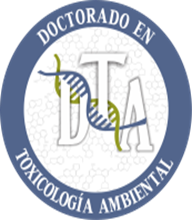benz[a]anthracene
Synonyms: "benz[a]anthracene", "tetraphene", "1,2-benzanthracene", "benzanthrene", "benzo[a]anthracene", "benzanthracene", "benz(a)anthracene", "naphthanthracene", "2,3-benzphenanthrene", "benzoanthracene", "1,2-benzanthrene", "1,2-benzanthrazen", "1,2-benzoanthracene", "2,3-benzophenanthrene", "benzo(a)anthracene", "benzo[b]phenanthrene", "benzo(b)phenanthrene".
Source: benz[a]anthracene is present as a major component of total content of polynuclear aromatic hydrocarbon compounds in the environment. Human exposure to benz(a)anthracene occurs primarily through smoking of tobacco, inhalation of polluted air and by ingestion of food and water contaminated by combustion effluents
Identifiers:
IUPAC Name: [dimethyl(phenyl)silyl]oxy-dimethyl-phenylsilane
CAS Number: 56-55-3
PubChem ID: 5954
InChiKey: DXBHBZVCASKNBY-UHFFFAOYSA-N
Canonical SMILES: C1=CC=C2C(=C1)C=CC3=CC4=CC=CC=C4C=C32
Structural Properties:
Molecular Formula: C18H12
Molecular Weight: 228.294
Pharmacophore Features:
Number of bond donors: 0
Number of bond acceptors: 0
Number of atoms different from hydrogen: 18
Downloads
2D structure (.sdf)
3D structure (.sdf)
3D structure (.mol2)
3D structure (.pdb)
3D structure (.pdbqt)
Search Similar molecules
Evidence Supporting This Chemical as an Endocrine Disruptor
TEDX List of Potential Endocrine Disruptors

Fertuck KC, Kumar S, Sikka HC, Matthews JB, Zacharewski TR. 2001. Interaction of PAH-related compounds with the alpha and beta isoforms of the estrogen receptor. Toxicol Lett 121(3):167-177. DOI: 10.1016/S0378-4274(01)00344-7. URL: http://www.sciencedirect.com/science/article/pii/S0378427401003447?via%3DihubMachala M, Vondracek J, Blaha L, Ciganek M, Neca JV. 2001. Aryl hydrocarbon receptor-mediated activity of mutagenic polycyclic aromatic hydrocarbons determined using in vitro reporter gene assay. Mutat Res 497(1-2):49-62. DOI: 10.1016/S1383-5718(01)00240-6. URL: https://www.sciencedirect.com/science/article/pii/ S1383571801002406Vinggaard AM, Hnida C, Larsen JC. 2000. Environmental polycyclic aromatic hydrocarbons affect androgen receptor activation in vitro. Toxicology 145(2-3):173-183. DOI: 10.1016/S0300-483X(00)00143-8. URL: https://www.sciencedirect.com/science/article/pii/ S0300483X00001438Vondracek J, Kozubik A, Machala M. 2002. Modulation of estrogen receptor-dependent reporter construct activation and G0/G1-S-phase transition by polycyclic aromatic hydrocarbons in human breast carcinoma MCF-7 cells. Toxicol Sci 70(2):193-201. DOI: 10.1093/toxsci/70.2.193. URL: https://academic.oup.com/toxsci/article/70/2/193/1621654.
External Links




2D-structure

3D-structure




